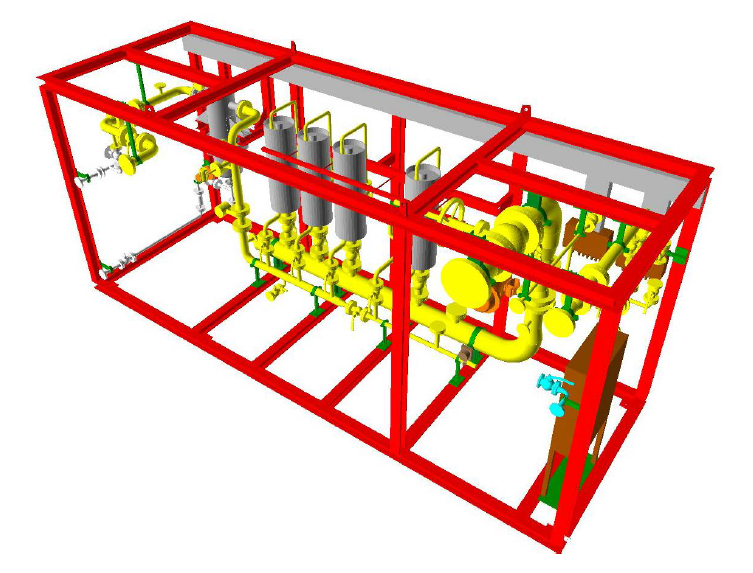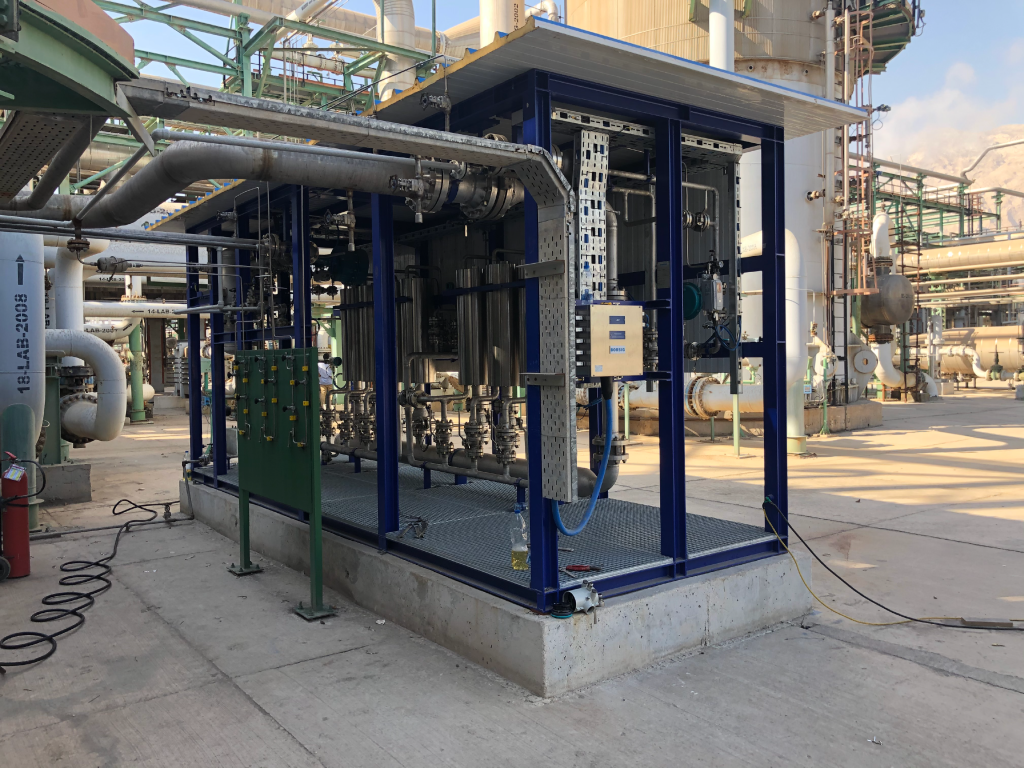Ethylene Recovery Unit for PE Production
The Ethylene Recovery Unit is an easy add-on system and can be considered for new and existing process installations. The purge gas stream containing the ethylene monomer and inert gas, is typically pressurized and fed into the membrane system, while the permeate side of the membrane separation stage is fed back into the existing process gas compressor’s suction side. By means of the resulting pressure difference and the hydrocarbon selective membrane material, the purge gas stream is separated into off-gas, enriched with inert gas, and the recycled ethylene-rich permeate stream. No other equipment or machinery is usually required making this a very simple and reliable process solution.
The benefits
- Fast & Easy installation in new plants and easy retrofit in existing plants
- Only a membrane separator is required
- Quick return of investment
- Low maintenance
Safe and reliable operation and without any power or rotary equipment.
Hydrocarbon Recovery Unit
The Hydrocarbon Recovery Unit is a portfolio of specially developed and customized process solutions to meet emissions legislation, reducing the flare and minimize the loss of product and profit by the recovery of valuable and treated hydrocarbon.
In this technique, membrane is combined with absorption, condensation, extraction etc. These hybrid processes are very efficient and enable the customer to operate at the highest economic and ecological efficiency.
Typical application is the vent gas from PE plants. The vent gas coming from the overhead of the upstream separator still contains a high amount of butane and pentane. This Unit separates the butane and pentane from the nitrogen before it is fed back to the suction side of the vent recovery compressor.
Propylene Recovery / Nitrogen Recovery Unit
The Propylene Recovery Unit is an easy add-on system and can be considered for existing and new process installations. The purge gas stream is compressed and condensed in the downstream condenser stage being cooled with a cooling agent or liquid propylene. A degassing vessel downstream of the propylene separator may prove useful to reduce the amount of inert gases solved in the recovered propylene. The recovered propylene can be provided in a liquid or gaseous state at battery limit. For some PP production licenses an additional dryer system must be installed prior to condensation. After separating the condensate, the remaining purge gas is fed into the membrane system while the permeate side of the membrane separation stage is fed back to compressor’s suction side. By means of the resulting pressure difference and the hydrocarbon selective membrane material, the purge gas stream is separated into the purified nitrogen stream and the recycled propylene-rich permeate stream. A small part of the separated stream is sent to the flare to prevent accumulation of lighter components. In some cases, a hydrogen-selective membrane stage is used in order to meet the requirements of the highly purified nitrogen. In principle this stage is installed downstream of the hydrocarbon-selective membrane stage.
The benefits
- Recovery rates > 95% propylene and purity > 99 mol% nitrogen
- Quick return of investment
- Safe operation, high reliability, low maintenance
- Quick installation and easy implementation by package unit design
- Adaptation to existing plants
Ethylene Recovery Unit for EO/EG Production
The Ethylene Recovery Unit enables the recovery of valuable ethylene monomer from the cycle gas purge. Typically, the purge gas first enters an inlet filter in order to remove droplets before entering the hydrocarbon-selective membrane stage. In the membrane stage ethylene is separated from argon and nitrogen. The ethylene-rich stream is routed to the suction side of the reclaim gas compressor whereas the ethylene-depleted stream is routed to the boiler unit.





